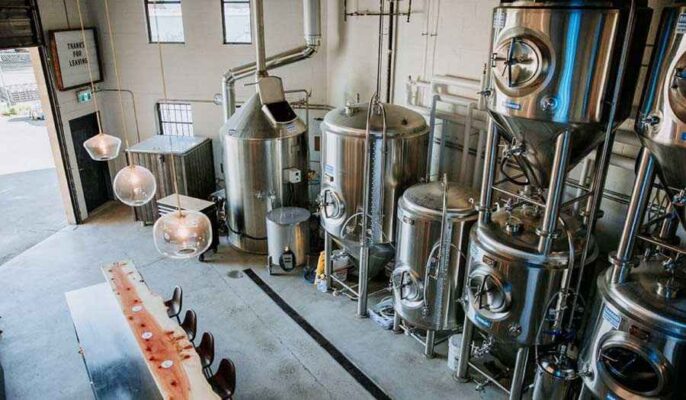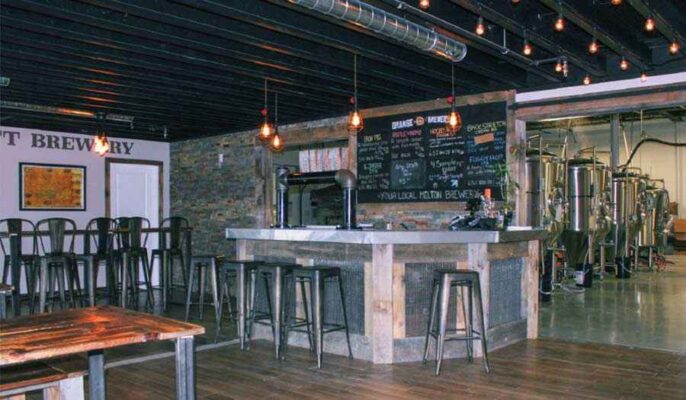Craft beer is a beer brewed by craft breweries. They make smaller quantities of beer, usually fewer than the larger breweries, and are often owned. Such breweries are often thought of and marketed as emphasizing enthusiasm, new flavors, and diverse brewing techniques.
The microbrewery movement started in the 1970s in the US and UK, although traditional craft brewing has existed for centuries in Europe and has since spread to other countries. As the movement grew and some breweries expanded production and distribution, the broader concept of craft beer emerged.
Definition of craft brewery
Small
The annual output must not exceed 6 million barrels of beer. Under alternating ownership rules, beer production goes to the brewery.
Independent
Less than 25 percent of a craft brewery is owned or controlled by members of the beverage alcohol industry who are not themselves craft brewers.

The History of Craft Beer
In the late 19th and early 20th centuries, the number of breweries in the United States peaked at about 3,000, many of which were rooted in European brewing traditions imported from overseas. The legalization of home brewing in 1978 sparked curiosity among enthusiasts. With the help of events like the American Oktoberfest, craft beer is starting to move from the fringe to the cultural fad. As the number of craft breweries skyrocketed to 1,000 by 1996, this was no longer an obscure movement; it was a thrilling journey that took taste buds into the new century and beyond.
What is the difference between craft beer and regular beer?
Common beer refers to beer produced by “large breweries”. Its output dwarfs that of craft breweries, and they are often traded or not owned.
Craft beer so happens to remain the most popular. We all know that every grocery store has those familiar light beers, usually with a lower alcohol content. They’re affordable, simple and easy to drink.
The difference between a craft brewery and other breweries
Microbrewery
A microbrewery is the smallest business you can own, for personal use. They are usually defined as using a 1-3 keg system, and their output can be one bottle of beer every other day, or 500 kegs of beer per year.
For a brewery to be called a microbrewery, it must meet the following criteria:
- Produces up to 460,000 gallons or 15,000 barrels of beer per year.
- Sell 25% or more beer at the brewery. We see this a lot in venues like bars, restaurants and brewpubs that also double as microbreweries.
- They are known for brewing “specialty beers”. Microbreweries produce small boutique beers, sometimes brewed for an event or season, and often crafted to highlight special ingredients such as specific hops.
Nano brewery
Nanobreweries are a bit tricky when it comes to production, as there is no specific number of barrels or gallons of beer to classify a brewery as a Nanobrewery. Nano breweries make less beer than all other types of breweries. But, this may be a bit of an oversimplification, since the number threshold is not well defined. Another definition is any brewery run by one or two people.
Beer pub brewery
Where brewers are allowed to sell beer to consumers, they often open brewpubs, which are a combination brewery and bar/restaurant.
The following criteria must be met:
- Twenty-five percent or more of their beer must be sold on-site.
- They dispense beer from the tank into the consumer’s glass or mug.
- Beer storage tanks are often used as part of the beer bar aesthetic, giving the venue a more industrial look than most bars and restaurants.
- These tanks also give the location a certain authenticity.
Independent brewery
An independent brewery can be a nanobrewery, microbrewery or craft brewery, as no more than 24% of the brewery is owned by outside interests. In 2017, the Brewers Association created the Independent Craft Brewers Seal to allow customers to identify breweries that meet craft beer standards.

The Cost of Starting a Craft Brewery
The cost of opening a brewery will also vary depending on factors such as location, size, format, and more. One major difference – the brewery equipment required to malt, mash, boil, ferment and package beer.
Even a microbrewery or small business costs at least $250,000 to start. For larger breweries offering a more diverse craft beer offering, start-up costs can run as high as $2 million. On average, it costs between $500,000 and $1.5 million to start a brewery.
Craft Brewery Startup Costs
Before you start figuring out costs, take some time to plan out the costs of your restaurant business plan to ensure you’re allocating the funds .
The following checklist can help you plan your references.
Place
Most states have designated areas for the industry. To make sure you don’t waste any time scouting restricted areas, check with your local authority before taking this step.
Brewery interior design
What kind of atmosphere do you want to create in your brewery? Interior design and layout will determine how people spend time there and the ambiance created.
Brewery equipment
- Fermentation tanks, boiling equipment, and brewing kettles
- Test strips, meters, stockpots, and part scales
- The walk-in refrigerator can store kegs
- Bottling and packaging tools, including growers and beverage transporters
- Keg opening, dispensing, and service equipment
- Safety Gear and Equipment




